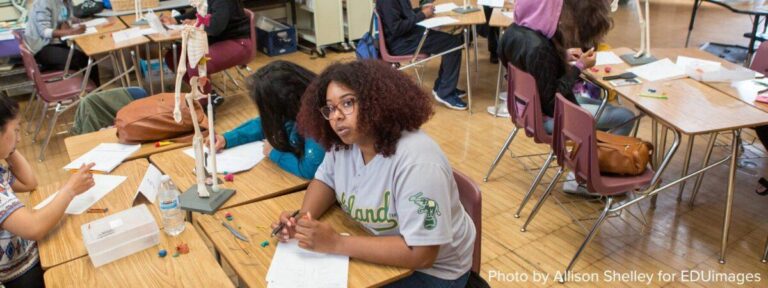Understanding the Diverse School Start Dates Across the United States
As summer fades and the new school year looms, the timing for students to return to classrooms varies significantly throughout the U.S. According to recent data from the Pew Research Center, the phrase “back to school” can signify anything from late July to well beyond Labor Day, depending on regional customs and state policies. This wide disparity highlights the unique educational calendars that influence family routines and community life every fall.
How School Start Dates Differ by Region
There is no single national date marking the beginning of the academic year. Instead, school start times range broadly, influenced by geography, climate, and local traditions. For example, many southern states kick off classes as early as late July to avoid the peak summer heat, while northern states often delay the start until after Labor Day to extend summer vacations. This regional variation reflects differing priorities regarding education schedules and family dynamics.
- Southern States: Typically begin school between late July and early August.
- Midwestern States: Most schools start in mid to late August.
- Northeastern States: Frequently commence classes after Labor Day.
- Western States: Exhibit a mixed schedule, ranging from mid-August to early September.
| Region | Common Start Period | Reasoning Behind Timing |
|---|---|---|
| South | Late July ŌĆō Early August | Avoiding intense summer heat and hurricane season |
| Midwest | Mid to Late August | Maximizing summer break and favorable weather |
| Northeast | After Labor Day | Long-standing tradition and extended summer vacations |
| West | Mid-August to Early September | Varied climate and local preferences |
Key Regional Influences Shaping School Calendars
The timing of school openings is shaped by a combination of environmental, cultural, and policy-driven factors unique to each region. In warmer southern and western areas, earlier start dates help schools conclude before the hottest months arrive. Conversely, in the Northeast and Midwest, calendars often align with agricultural cycles and community traditions that favor longer summer breaks.
Primary factors affecting school start dates include:
- Climate: Hotter regions prefer earlier starts to avoid extreme heat during the school year.
- Agricultural demands: Rural communities, especially in the Midwest, schedule around planting and harvest seasons.
- State education regulations: Local laws and funding timelines influence official school calendars.
- Community values: Parental input and cultural customs often guide district decisions.
| Region | Typical Start Window | Main Influencing Factor |
|---|---|---|
| South | Late July to Early August | Climate and heat avoidance |
| West | Early to Mid-August | State policies and diverse climates |
| Midwest | Mid to Late August | Agricultural schedules |
| Northeast | After Labor Day | Tradition and community preference |
How Varied School Start Dates Affect Families and Communities
The staggered nature of school start dates across the country has a significant impact on family life and local economies. Early start dates can shorten summer vacations, requiring parents to adjust work schedules or seek additional childcare options. On the other hand, districts that begin after Labor Day offer extended summer leisure but may place greater demands on community resources as families balance longer periods without school.
These differences also influence local businesses and service providers. For example, retailers in states with early school openings often experience a surge in back-to-school shopping sooner, while those in regions with later start dates benefit from prolonged summer tourism and leisure spending. Community organizations such as libraries, sports clubs, and arts programs must also adapt their schedules to accommodate fluctuating participation levels.
- Childcare centers: Demand varies directly with school start dates.
- Retailers: Back-to-school sales periods shift regionally.
- Seasonal employers: Hiring cycles adjust based on summer break length.
- Transportation services: Bus routes and schedules are tailored to local calendars.
| Start Date Range | Community Effects | Representative States |
|---|---|---|
| Late July ŌĆō Early August | Higher early childcare demand, earlier retail peak | Texas, Florida |
| Mid-August | Balanced summer usage, gradual service transitions | Illinois, Ohio |
| After Labor Day | Extended summer activities, delayed economic surge | California, New York |
Effective Strategies for a Smooth Back-to-School Transition
To facilitate a seamless return to school, both families and educators should emphasize early planning and open communication. Establishing clear routines around sleep, study, and extracurricular activities at least a week before classes begin can help students adjust more comfortably. Creating dedicated learning spaces at home also fosters focus and signals the shift back to academic life. Parents are encouraged to discuss their childrenŌĆÖs feelings about the upcoming school year to identify and address any anxieties.
Schools and communities play a vital role by offering programs that ease students into their new environments. Orientation events, peer mentoring, and family engagement workshops build connections and foster a supportive atmosphere. Below are some proven approaches and their advantages:
| Approach | Benefit |
|---|---|
| Orientation Programs | Introduces students to school layout and expectations |
| Peer Mentorship | Encourages social bonding and support networks |
| Family Engagement Workshops | Promotes collaboration between parents and educators |
| Routine Development | Supports consistent sleep and study habits |
Conclusion: Embracing the Diversity of School Start Dates
The academic calendar in the United States is far from uniform, with school start dates spanning from late July to well after Labor Day. This variation, highlighted by Pew Research Center findings, reflects the rich tapestry of regional climates, cultural traditions, and policy decisions that shape education nationwide. Recognizing and understanding these differences is essential for families, educators, and communities as they prepare for the new school year, ensuring that each studentŌĆÖs transition is as smooth and supportive as possible.







